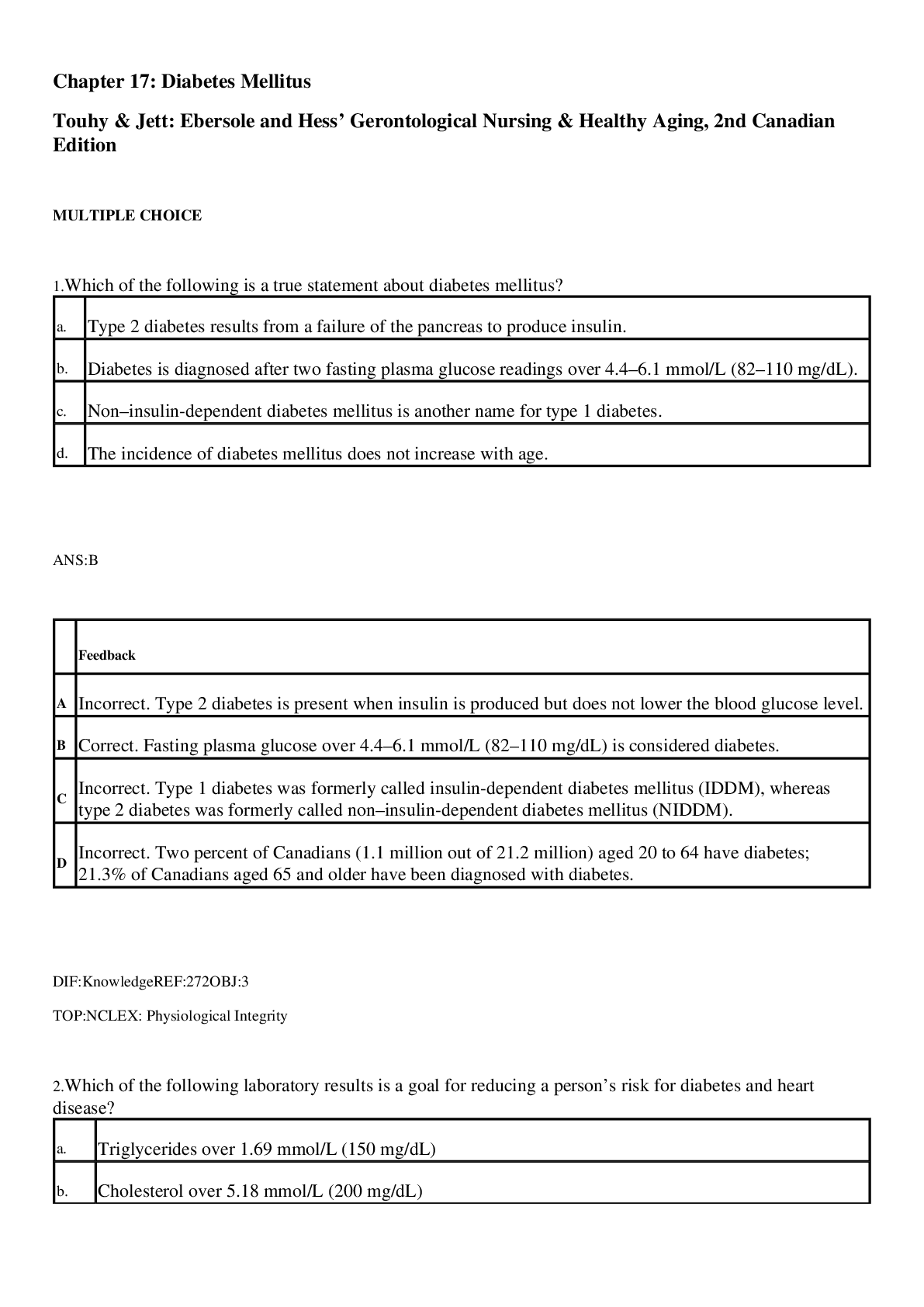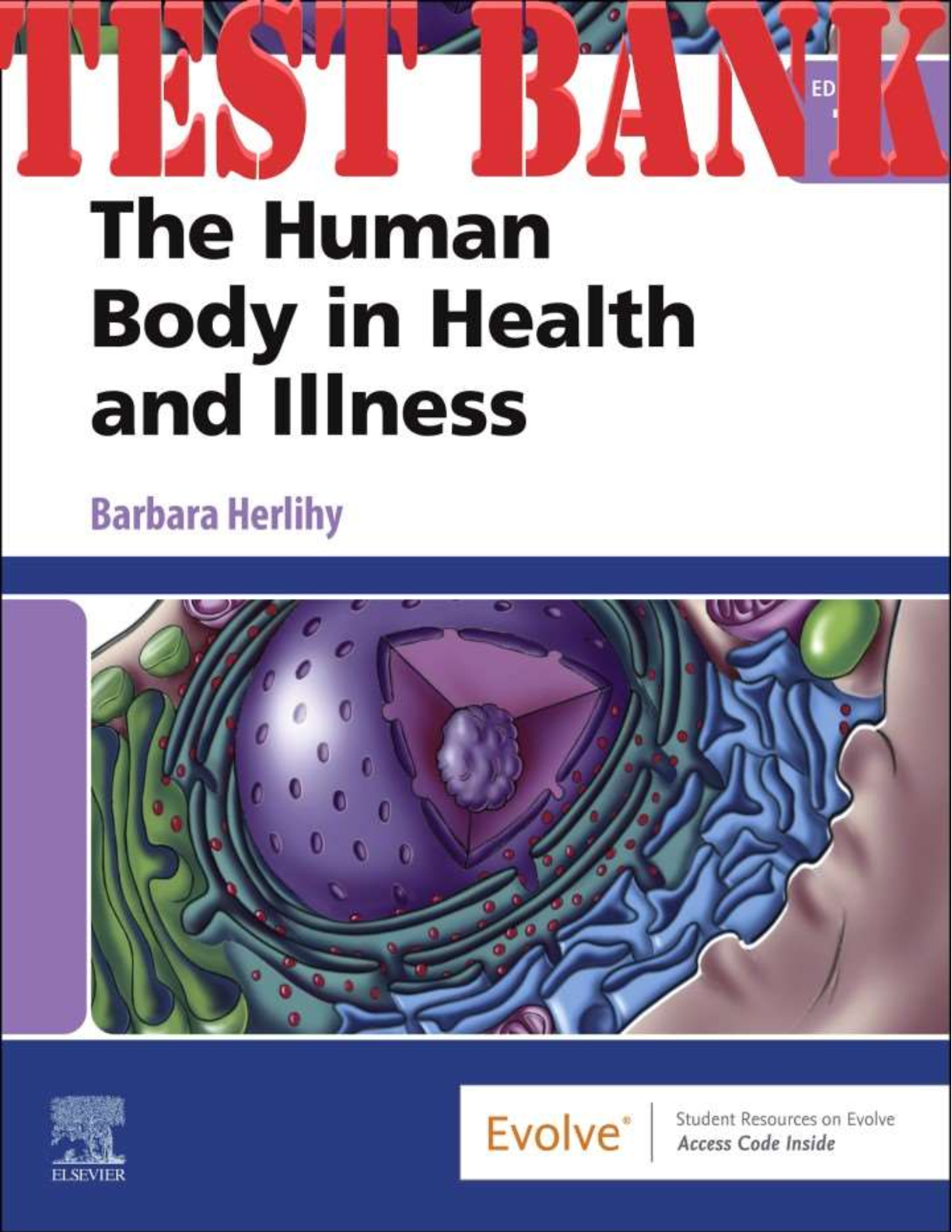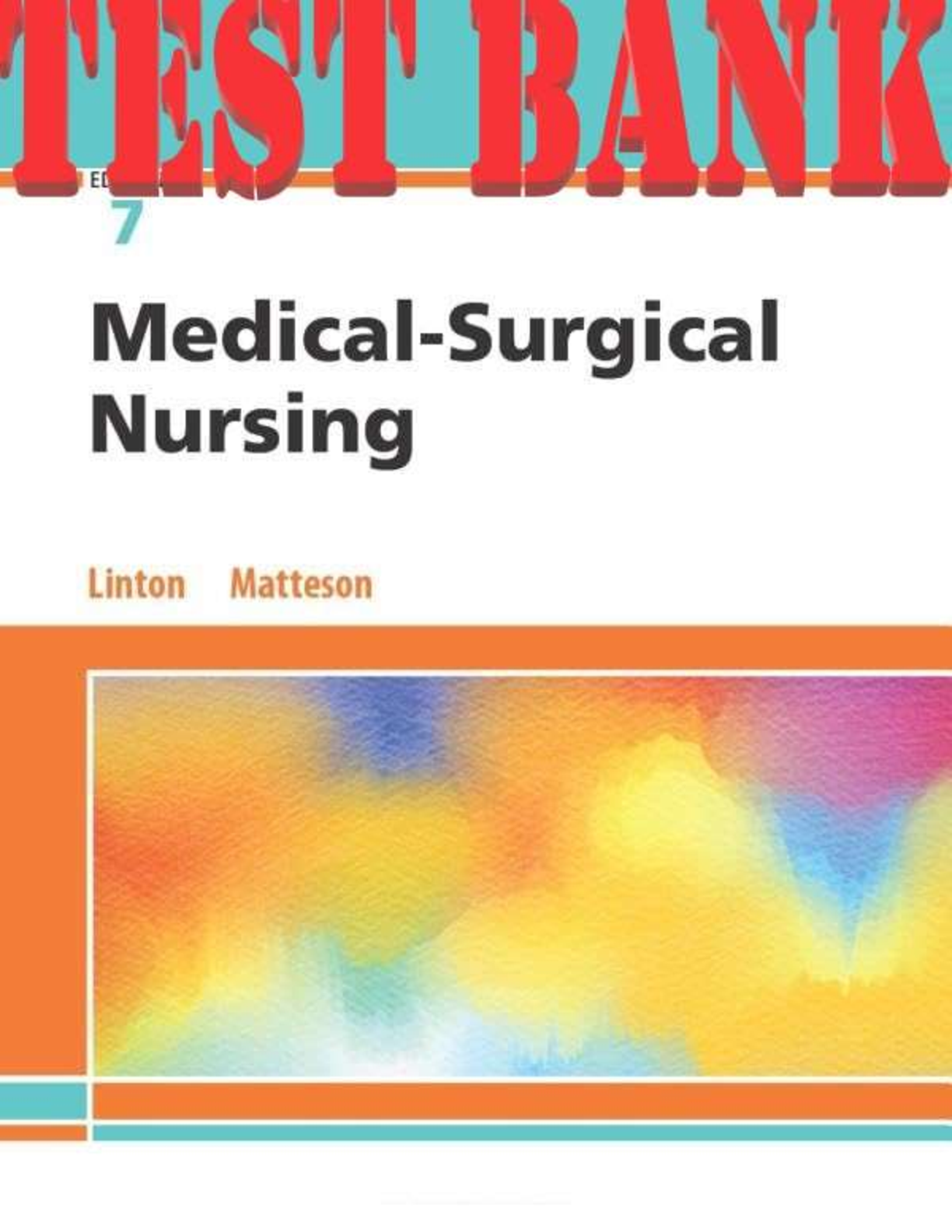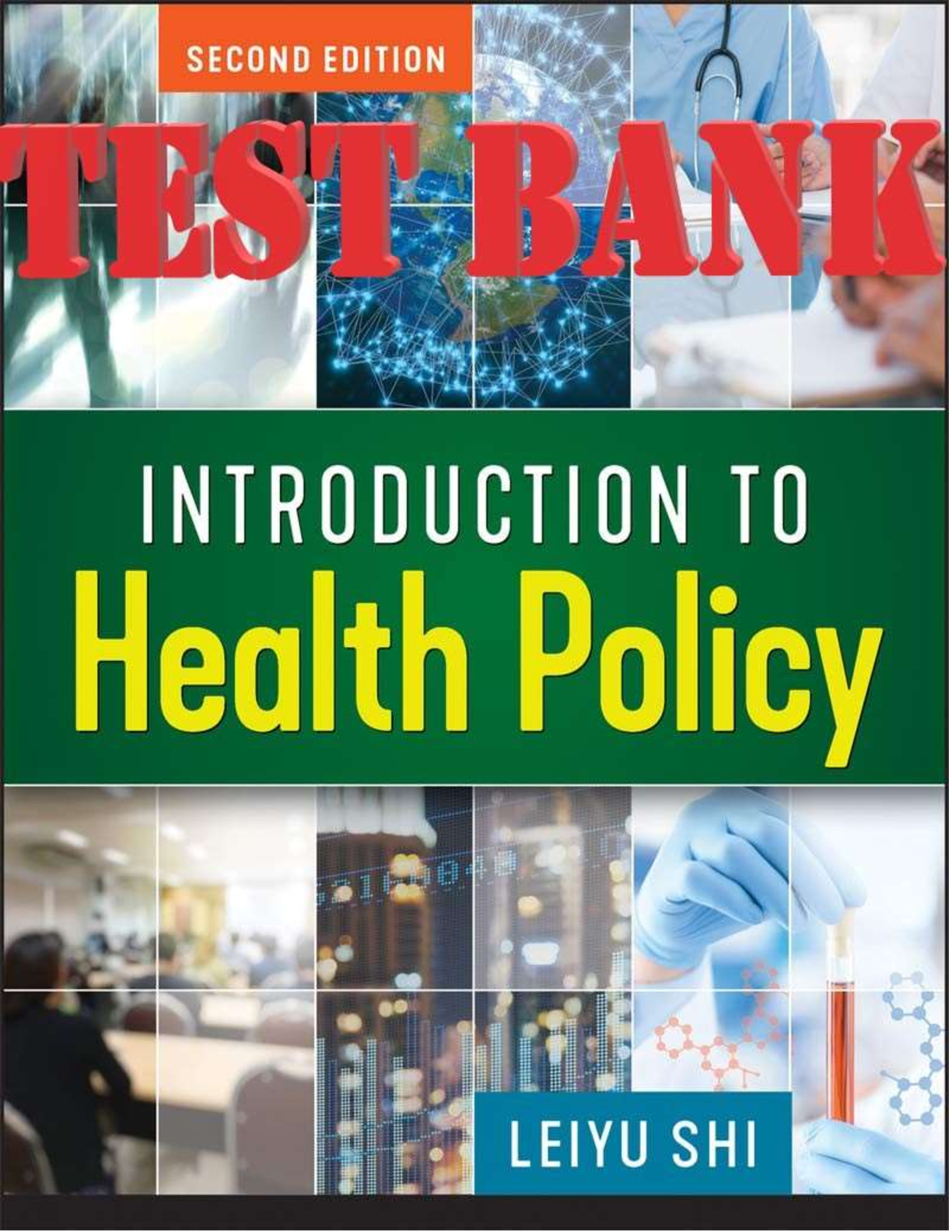*NURSING > TEST BANK > TEST BANK FOR INTRODUCTION TO CRITICAL CARE NURSING 7TH EDITION BY SOLE"Chapter 8: Hemodynamic Monit (All)
TEST BANK FOR INTRODUCTION TO CRITICAL CARE NURSING 7TH EDITION BY SOLE"Chapter 8: Hemodynamic Monitoring
Document Content and Description Below
Chapter 8: Hemodynamic Monitoring Test Bank MULTIPLE CHOICE 1. The nurse is caring for a 100-kg patient being monitored with a pulmonary artery catheter. The nurse assesses a blood pressure of... 90/60 mm Hg, heart rate 110 beats/min, respirations 36/min, oxygen saturation of 89% on 3 L of oxygen via nasal cannula. Bilateral crackles are audible upon auscultation. Which hemodynamic value requires immediate action by the nurse? a. Cardiac index (CI) of 1.2 L/min/m3 b. Cardiac output (CO) of 4 L/min c. Pulmonary vascular resistance (PVR) of 80 dynes/sec/cm-5 d. Systemic vascular resistance (SVR) of 1800 dynes/sec/cm-5 ANS: A A cardiac index of 1.2 L/min/m3 combined with the identified clinical assessment findings indicate a low cardiac output with fluid overload (bilateral crackles) requiring intervention. The remaining hemodynamic values are within normal limits: cardiac output of 4 L/min; pulmonary vascular resistance of 80 dynes/sec/cm-5; and the systemic vascular resistance of 1800 dynes/sec/cm-5. DIF: Cognitive Level: Analysis REF: Table 8-1 OBJ: Identify normal hemodynamic values. TOP: Nursing Process Step: Assessment MSC: NCLEX: Physiological Integrity 2. While caring for a patient with a small bowel obstruction, the nurse assesses a pulmonary artery occlusion pressure (PAOP) of 1 mm Hg and hourly urine output of 5 mL. The nurse anticipates which therapeutic intervention? a. Diuretics b. Intravenous fluids c. Negative inotropic agents d. Vasopressors ANS: B Low pulmonary artery occlusion pressures usually indicate volume depletion, so intravenous fluids would be indicated. Administration of diuretics would worsen the patient’s volume status. Negative inotropes would not improve the patient’s volume status. Vasopressors will increase blood pressure but are contraindicated in a low volume state. DIF: Cognitive Level: Analysis REF: p. 161 OBJ: Articulate appropriate nursing actions for patients with altered hemodynamic values. TOP: Nursing Process Step: Planning MSC: NCLEX: Physiological Integrity: Physiological Adaptation 3. The nursing is caring for a patient who has had an arterial line inserted. To reduce the risk of complications, what is the priority nursing intervention? a. Apply a pressure dressing to the insertion site. b. Ensure all tubing connections are tightened. c. Obtain a portable x-ray to confirm placement. d. Restrain the affected extremity for 24 hours. ANS: B Loose connections in hemodynamic monitoring tubing can lead to hemorrhage, a major complication of arterial pressure monitoring. Application of a pressure dressing is required only upon arterial line removal. Blood return is adequate confirmation of arterial line placement; x-ray studies are not performed to confirm arterial line placement. Neutral positioning of the extremity and use of an arm board, without limb restraint, is the standard of care. DIF: Cognitive Level: Application REF: p. 154 | Box 8-4 OBJ: Describe the indications, measurement, complications, and nursing implications associated with monitoring of invasive right atrial, left atrial, pulmonary artery, and intraarterial pressures and those equated with noninvasive monitoring of hemodynamic indices. TOP: Nursing Process Step: Intervention MSC: NCLEX: Physiological Integrity: Reduction of Risk 4. While caring for a patient with a pulmonary artery catheter, the nurse notes the pulmonary artery occlusion pressure (PAOP) to be significantly higher than previously recorded values. The nurse assesses respirations to be unlabored at 16 breaths/min, oxygen saturation of 98% on 3 L of oxygen via nasal cannula, and lungs clear to auscultation bilaterally. What is the priority nursing action? a. Increase supplemental oxygen and notify respiratory therapy. b. Notify the physician immediately of the assessment findings. c. Obtain a stat chest x-ray film to verify proper catheter placement. d. Zero reference and level the catheter at the phlebostatic axis. ANS: D A hemodynamic value not supported by clinical assessment should be treated as questionable. To ensure the accuracy of hemodynamic readings, the catheter transducer system must be leveled at the phlebostatic axis and zero referenced. In this example, the catheter transducer system may be lower than the phlebostatic axis, resulting in erroneously higher pressures. Clinical manifestations do not support increasing supplemental oxygen. Clinical manifestations do not warrant physician intervention; aberrant values should be investigated further. An aberrant value warrants further investigation, which includes zero referencing and checking the level as an initial measure. A chest x-ray study is not warranted at this time. DIF: Cognitive Level: Analysis REF: p. 152 | Clinical Alert OBJ: Analyze conditions that alter hemodynamic values. TOP: Nursing Process Step: Intervention MSC: NCLEX: Physiological Integrity 5. A patient is admitted to the hospital with multiple trauma and extensive blood loss. The nurse assesses vital signs to be BP 80/50 mm Hg, heart rate 135 beats/min, respirations 36 breaths/min, cardiac output (CO) of 2 L/min, systemic vascular resistance of 3000 dynes/sec/cm-5, and a hematocrit of 20%. The nurse anticipates administration of which the following therapies or medications? a. Blood transfusion b. Furosemide (Lasix) c. Dobutamine (Dobutrex) infusion d. Dopamine hydrochloride (Dopamine) infusion [Show More]
Last updated: 1 year ago
Preview 1 out of 22 pages
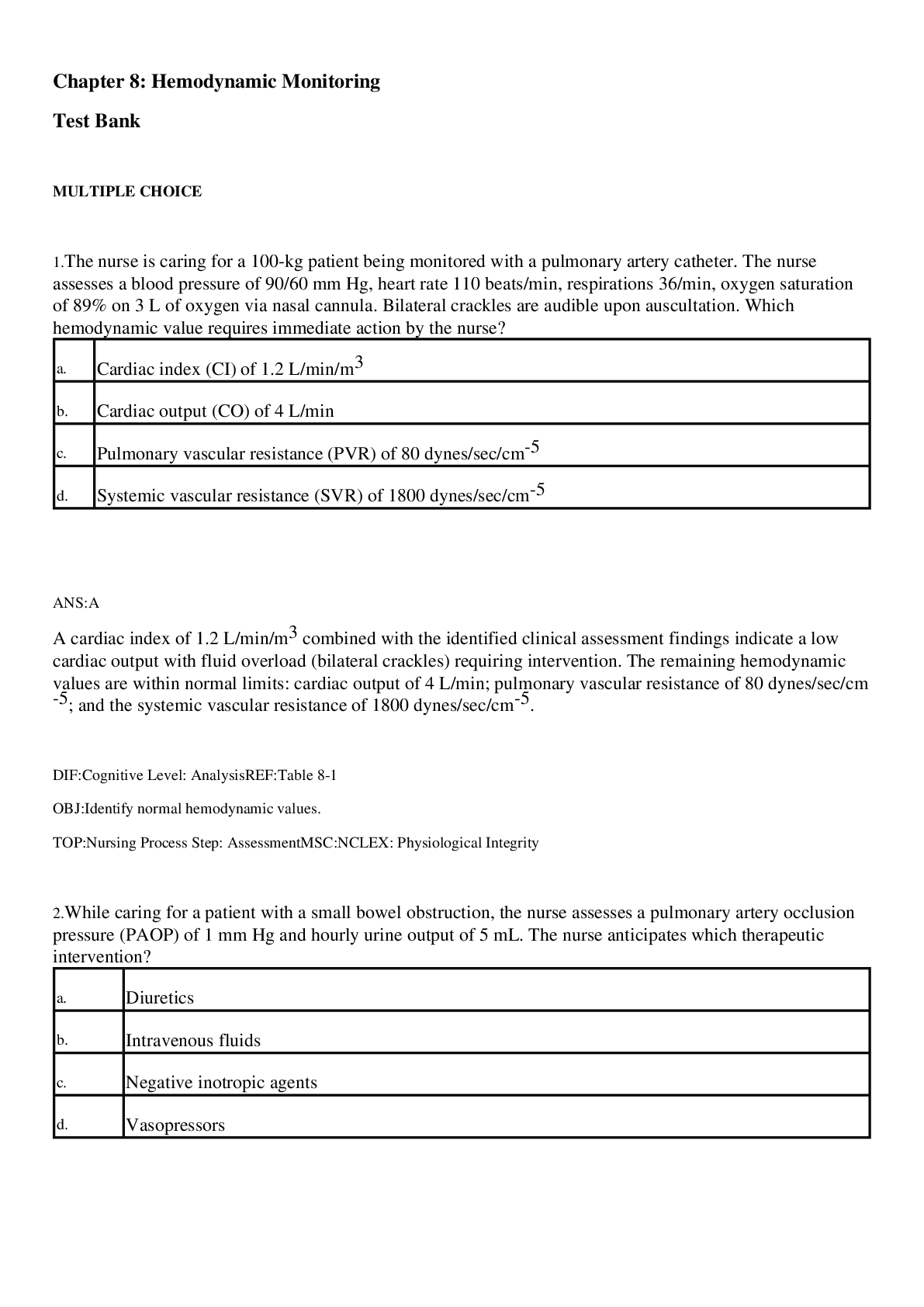
Buy this document to get the full access instantly
Instant Download Access after purchase
Add to cartInstant download
We Accept:

Reviews( 0 )
$4.50
Document information
Connected school, study & course
About the document
Uploaded On
Feb 27, 2021
Number of pages
22
Written in
Additional information
This document has been written for:
Uploaded
Feb 27, 2021
Downloads
0
Views
97



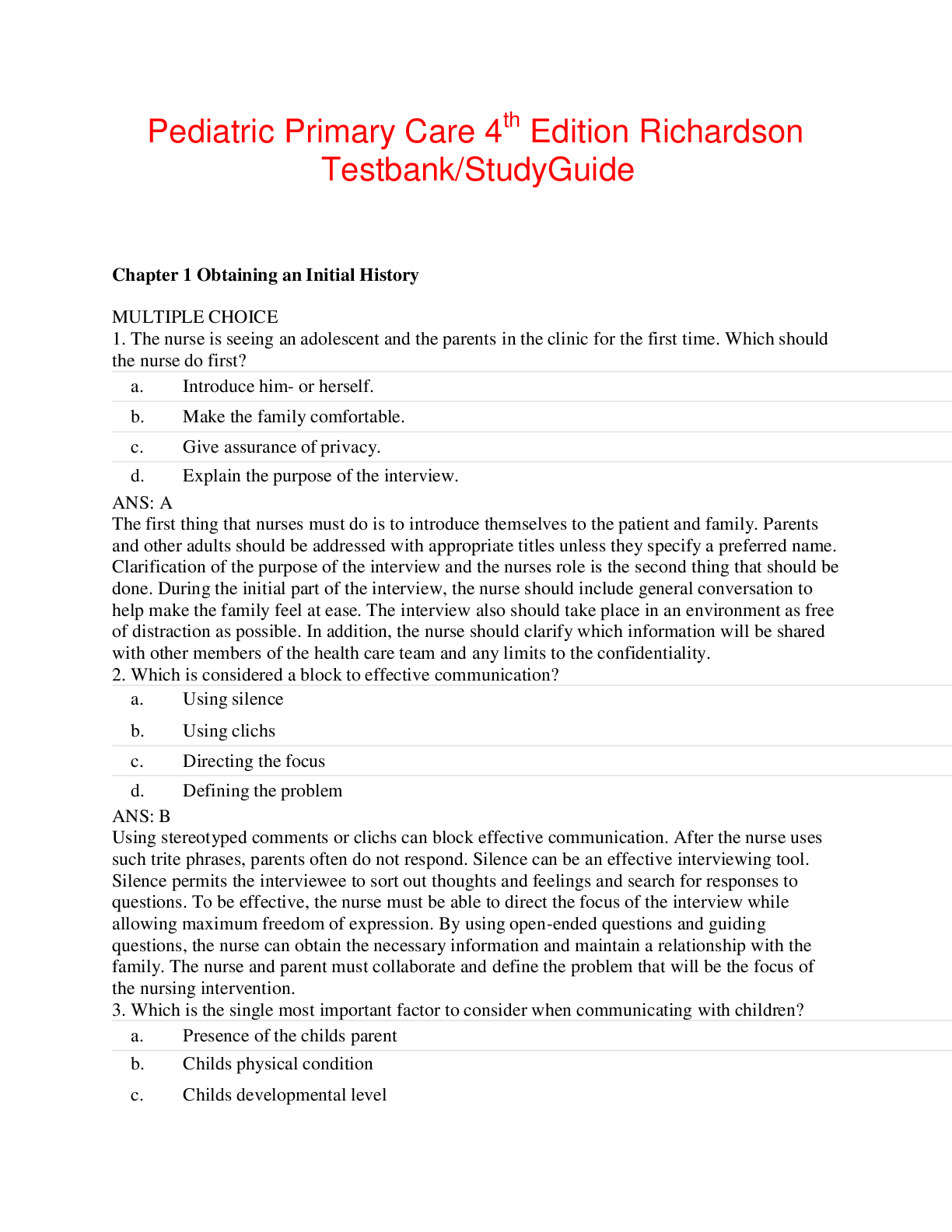

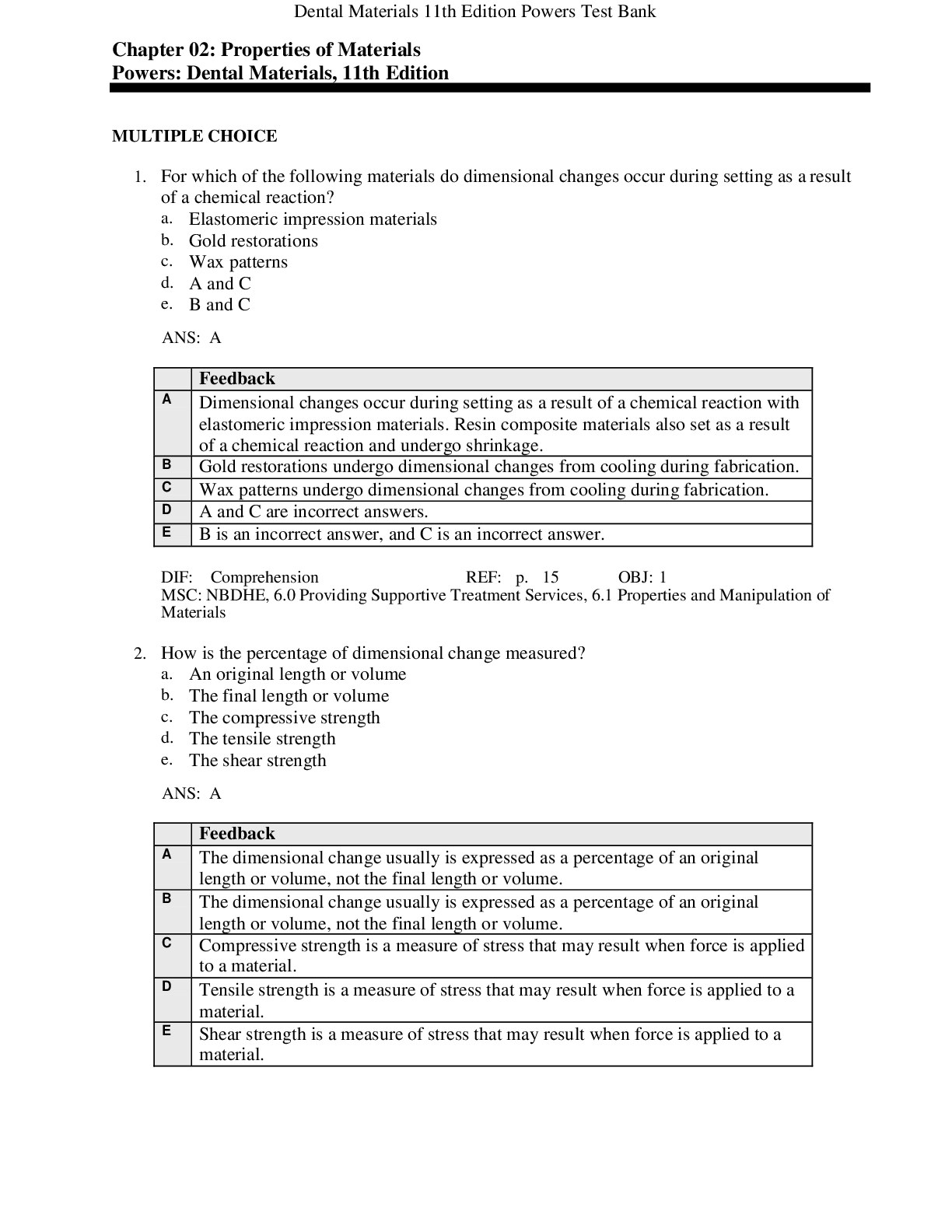
.png)
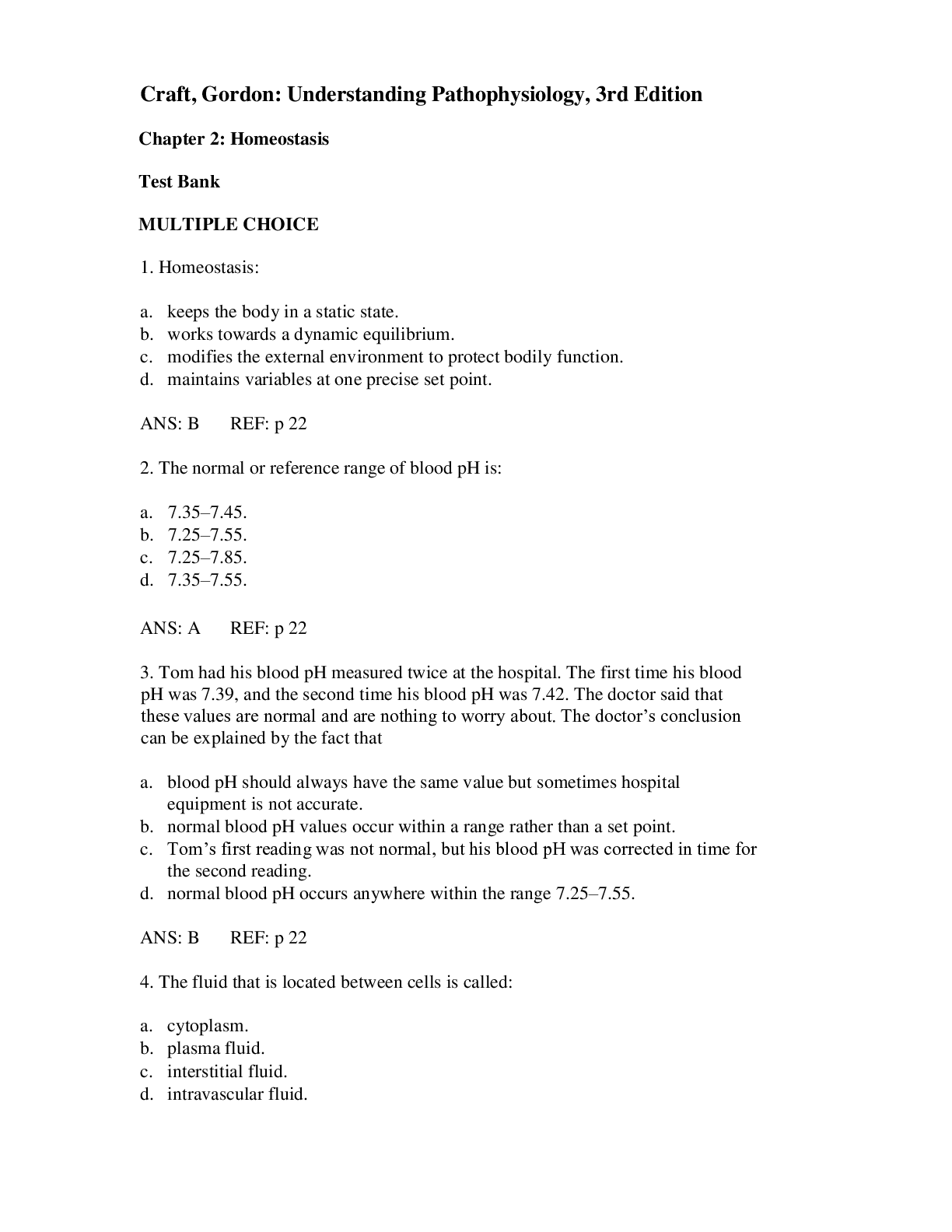



.png)
.png)
